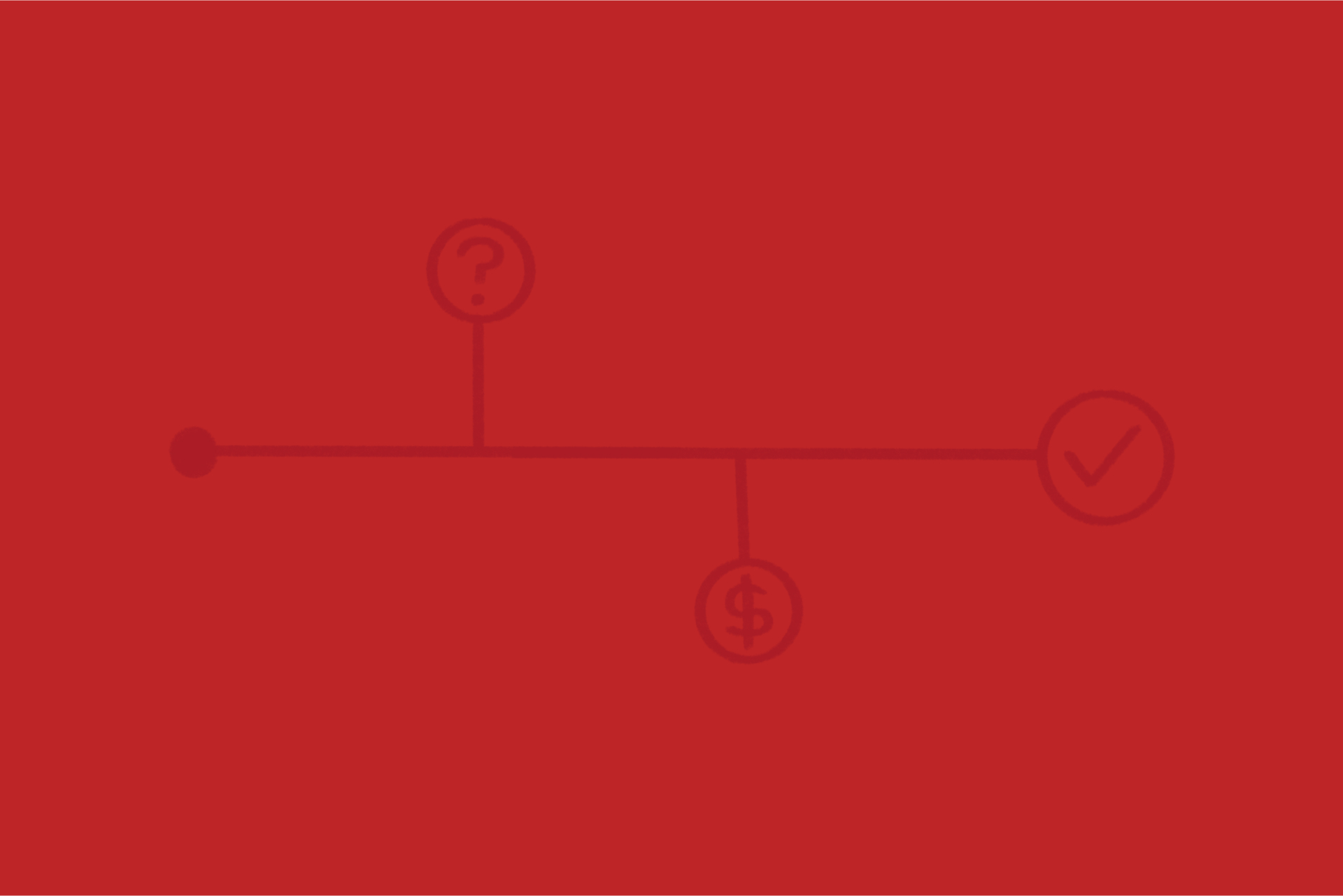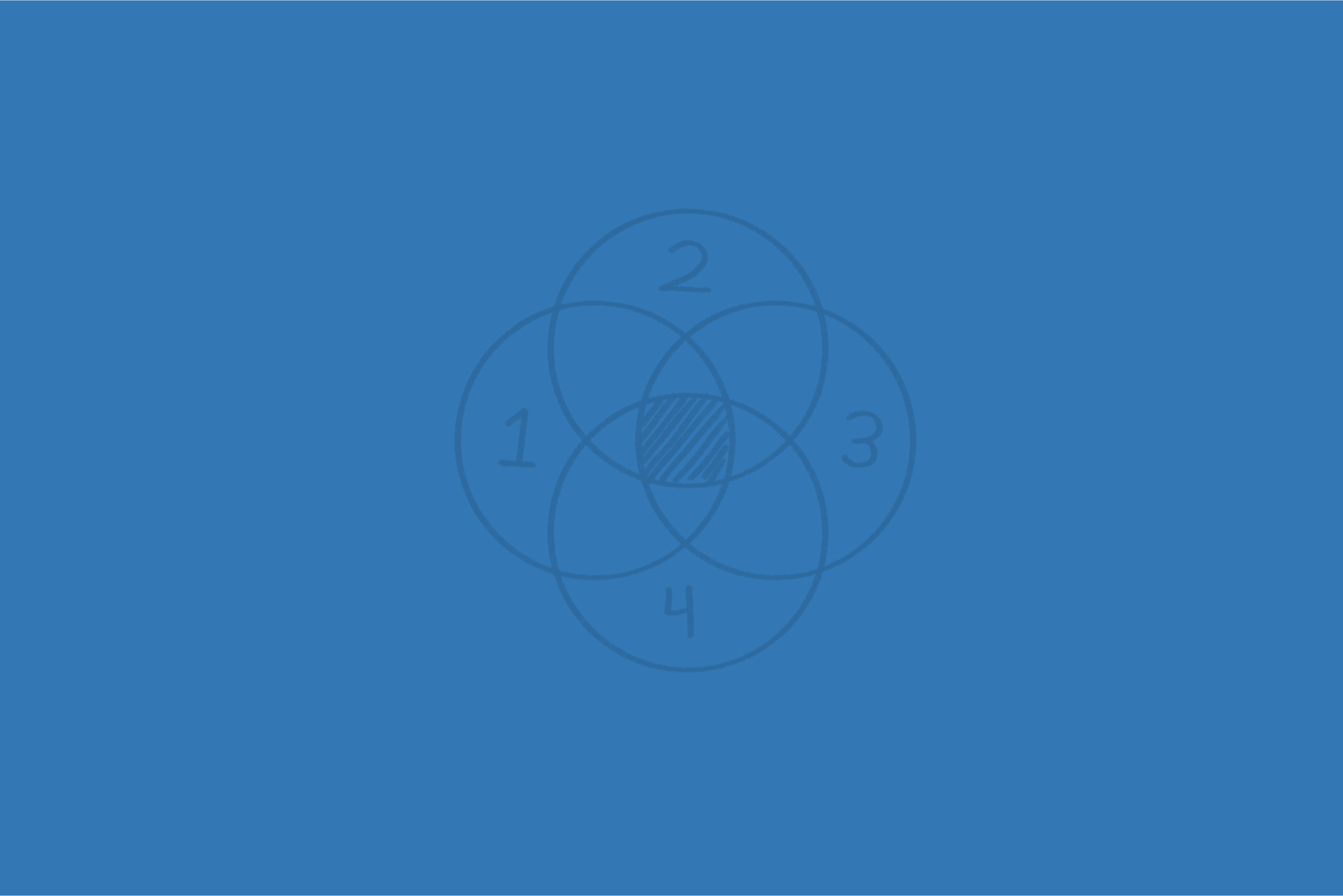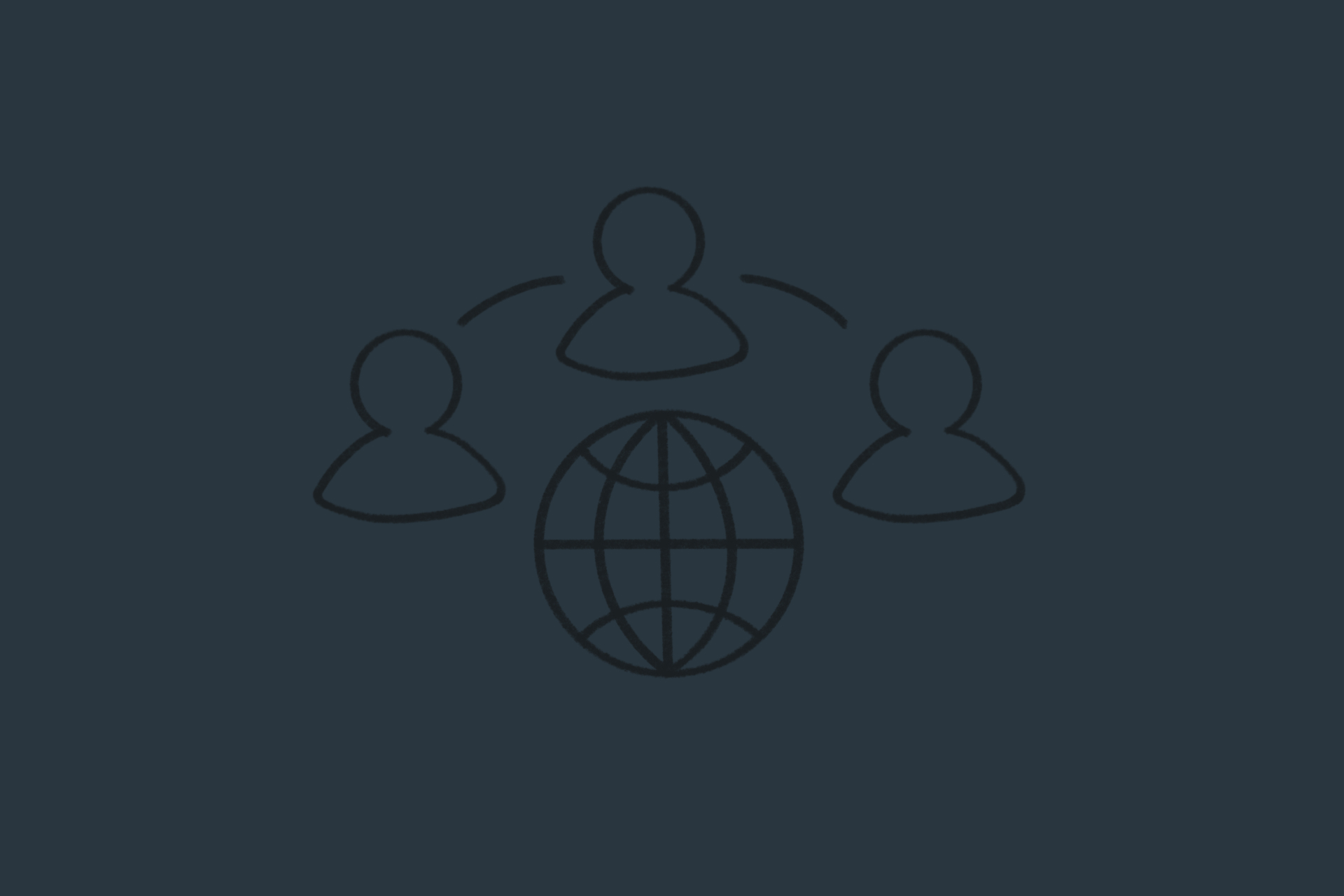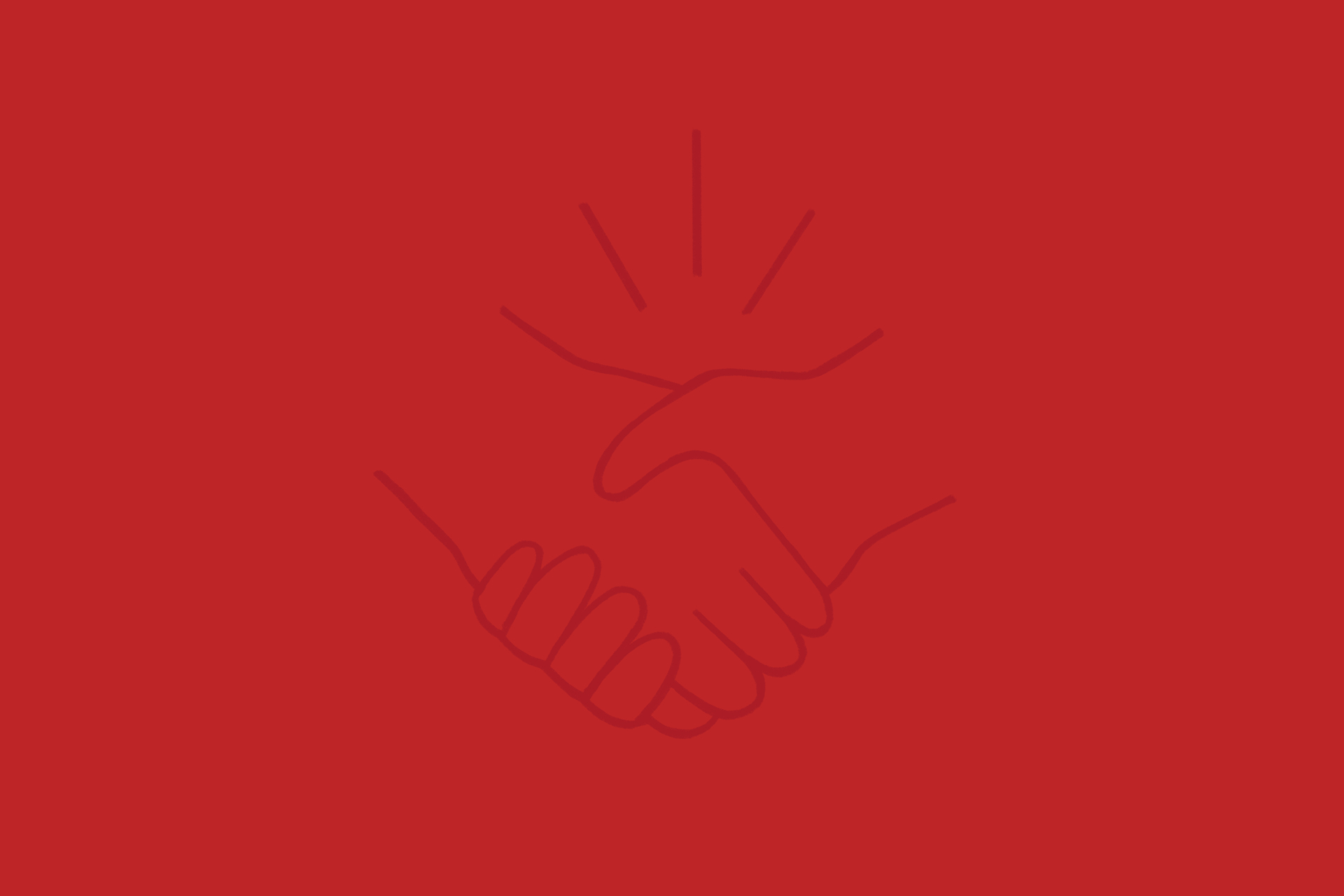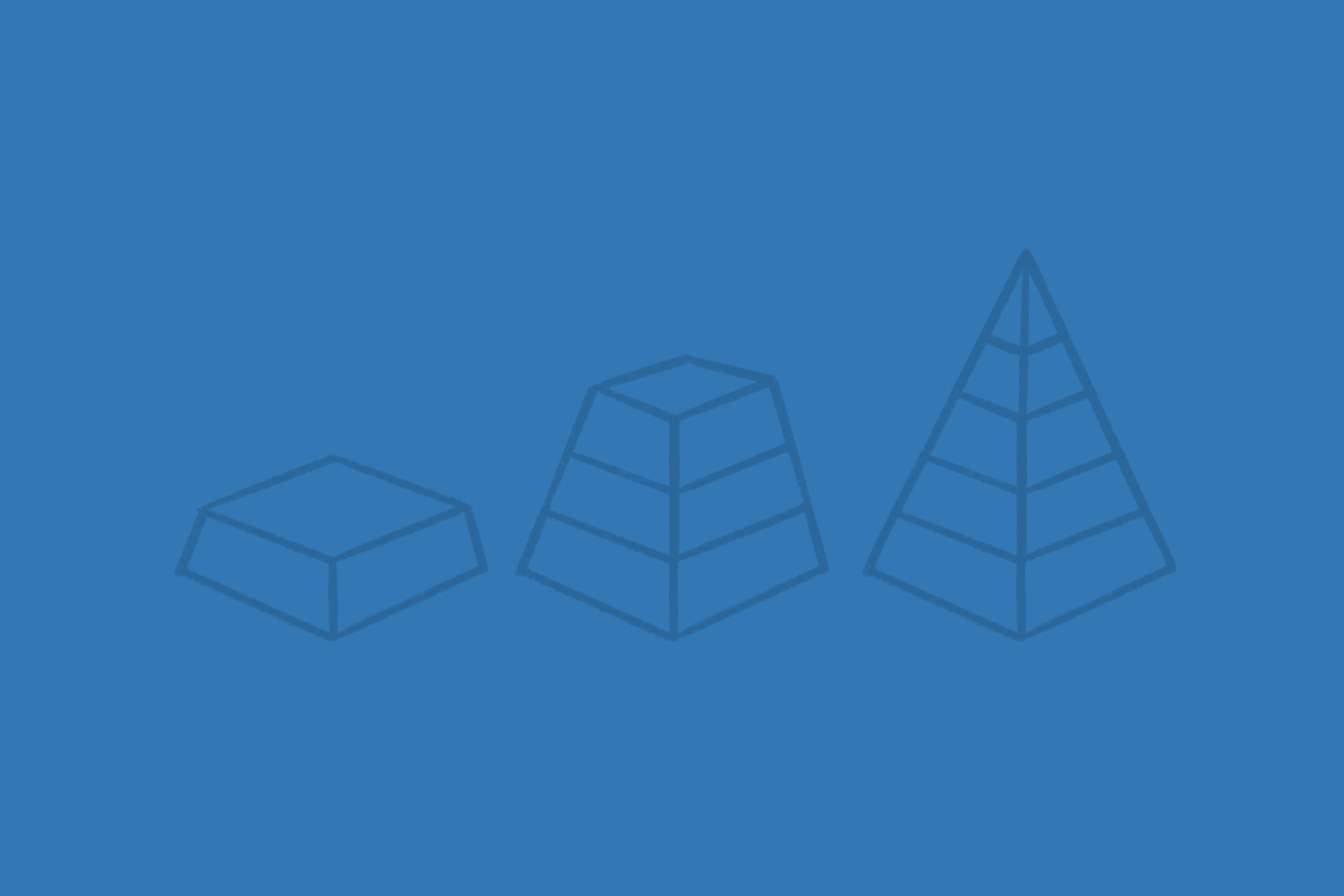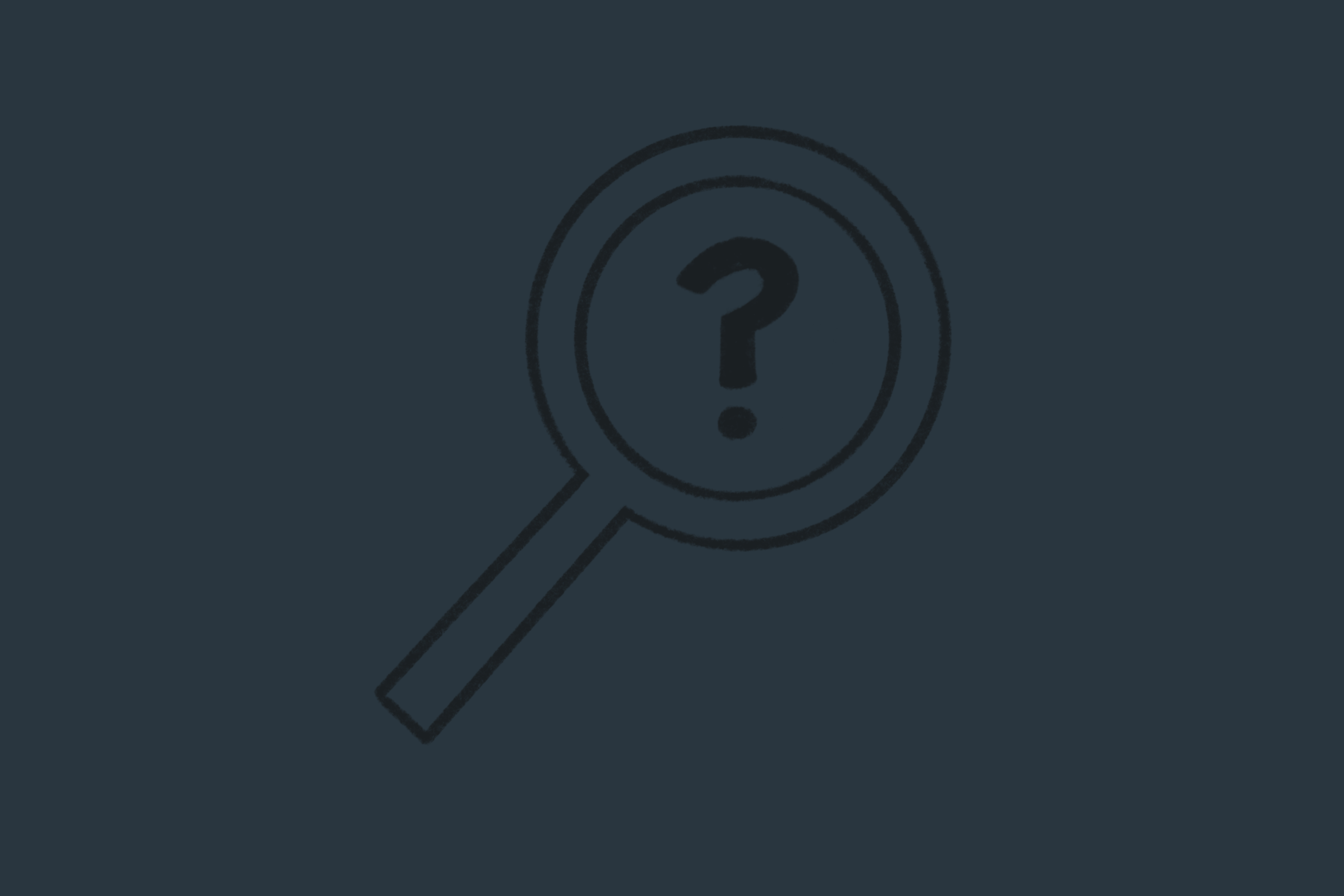Episode Summary
In our debut episode, Visual Logic partners Andy Van Fleet and Kurt Vander Wiel, along with Senior UX Designer, Andrew Sladky discuss the past, present, and future of Human-Centered Design.
Transcript
User Experience (UX)–and all other adjacent Experience disciplines (i.e., CX, EX, OrgX)–help solve complex business problems. Join us at the intersection of design thinking and business strategy.
[00:00:00] Andy: I’m Andy Van Fleet, the host of, Humans First, I’m joined by my business partner, Kurt Vander Wiel, we’ve been working together for a mighty long time, 25 years.
[00:00:10] Kurt: Oh, mighty long.
[00:00:11] Andy: And you’ve been doing user experience work since 1988.
[00:00:14] Kurt: Yep.
[00:00:15] Andy: And then also joining us is Andrew Sladky, who’s been, with Visual Logic for almost seven years now and, has been doing amazing user experience, work for our customers and also doing a lot of amazing work, internally for Visual Logic brand and things like that. So welcome to you both.
[00:00:31] Andrew: Yeah, thanks. It’s fun to be here on our first episode. We’re getting started.
[00:00:35] Andy: And that’s what we gotta do is just jump in and get started. So Kurt, 1988, what was the first project that you worked on? I’d love to hear from the technology standpoint. And then also who was the end user? Who was the human that you were solving for?
[00:00:50] Kurt: funny enough, when you said that I just started laughing here in the studio. People saw me laughing, but it’s because my first project was, how do you get a photograph onto a computer? And then what would you do with it, if you could do that? So right away the kind of problems we were solving were not just technical problems, but like what would you do with that? what benefit would there be to that? , what problem would you be solving for somebody? There was a technical aspect. We used a RAs drops 360 4 card. I remember
[00:01:21] Andy: Yeah. Sounds impressive.
[00:01:22] Kurt: in a Mac too, but we would capture these single frames of video but then, what could you do? So, start thinking through what are the variety of things that people need imagery for that, that some kind of printout or something isn’t practical for. And one of the first things we did was assembly line information systems. So we would have photographs on the assembly line that showed how these parts might go together. The expert users didn’t need that, but there was a lot of times where there was a user who just stepped away for they had a day off, they were sick, whatever. And someone new is just on that station .For one day. And photographs really helped them be able to understand what was going on. So solving a human problem right from the start.
[00:02:03] Andy: And what a transition that was from, I mean, I assume that it was paper before that, and then moving into this digital era, right?
[00:02:10] Kurt: Yeah. It was all just word descriptions before that, take part 32 52, 5 and attach it to part 42 44, 5 and it’s not understandable. Nobody thinks that way but seeing a picture of a part and the picture of the other part and now how they would join, that makes total sense without having to think about it
[00:02:28] Andy: That’s incredible.
What observations have you had when bringing in a user into the fold, there was a lot of information we started to gather from end users and started to try to figure out what to do with that information.
[00:02:41] Kurt: Yeah, in that time period, we’ve had every experience from one of my favorite projects ever. We had access to every single user cuz there was only eight of them or something like that, so we were able to interview every user and that’s a very unique experience too, where you’re building some piece of software that’s meant for such a small audience. And that was, the experience that dawned on me. There is no single solution that actually satisfies even these eight people let alone 800 people or 8,000 people. Because they think very differently from each other. And that was a huge aha moment for me in my career where it’s like, wow, we have to think very differently that this solution might be satisfying to me or to you or to somebody else and start to understand that solutions have to be dynamic. They have to be, moveable. And so you have to have eight people who can approach it from eight different ways and it still works very fundamental, move in how I thought about things.
[00:03:36] Andy: Do you think that the client and the business leaders knew that going into it? Or was there a discovery moment where it became evident that wait a second, this is this aha moment.
[00:03:46] Kurt: That’s great. The theme that has gone from the beginning and still continues today is how difficult it is for us to express to business leaders what we do. What the value of it is what the process is gonna be like, , what they should expect at any given point in time, because even that is very dynamic. You and I were standing at a whiteboard couple weeks ago, and you were showing me what one of our employees had done and presented it to the client. And I was like, not only is that amazing, but it’s brand new. If you had said, this is what we’re gonna do ahead of time, you wouldn’t be able to do that output because now you’re locked into what you said you were gonna do. Whereas our process, even though we say to our clients, when we’re selling this is the process we’re gonna take. We know when we’re saying that we know what we’re really saying is it’s gonna be something like this and we’re gonna use the tools that are appropriate at the time. I just wrote a statement of work that said at this point, we’ll do either a journey map or a service blueprint design, or a mental model. cause I don’t wanna lock myself in, I don’t know how I’m gonna solve the problem yet.
[00:04:52] Andy: Well, talk more about that because I think one of the values that really good user experience professionals can bring is that understanding. And I think there might be this misconception that a UX designer is just gonna do design and just come in, hand them requirements or do a brief whiteboarding session and then get started. I think in these really difficult and complex domains, understanding the problem space is, maybe a third of the overall journey of that project. I know that you have some great strategies that you use with like stakeholders and facilitating meetings. And you do a great job at being able to expertly ask questions and facilitate a conversation between tech people, business leaders, sales folks marketing, and then also include into it like the UX teams as well. And I don’t know that, the typical person, when I think about a UX designer, realizes the power of that understanding ecosystem to get everybody on the same page, to then move to the second phase of really good user experience, which is then the design phase of that.
[00:05:58] Kurt: We’ve talked a lot about, we work empathetically. If you can be present in a room and not be thinking about, the politics that are in the room, or who’s doing what or who’s thinking what, or who’s got this ax to grind or not. But if you can be present in that room, To me and this is where I probably am not as self aware enough, to me it feels like it becomes self evident what the next step is that needs to be taken, what the next set of questions are. so I think the only like required ingredient is, humility and curiosity. If you have those things, then I think you can be in a room and be able to just continue the conversation going like, well, how does that work? You know, being able to ask those questions. Why would they do that? But if you’re constantly thinking about what people’s impression of you is gonna be, or that these two people in the room are actually in a fight with each other all the time, or all that kind of stuff that stuff’s just going to be completely in the way of any chance you have of design and all. And that at that point, all you can rely on is tools, right? So I sometimes feel like people who rely on tools, it’s when there’s nothing else to know what to do a tool might be then helpful, right?
[00:07:11] Andrew: Andy you listed a lot of different areas of business or an organization all in one string. And you’re talking about getting stuck do some people sometimes just get stuck in, this is my role, or this is my responsibility. And how do we blur those lines or is that important to blur those lines? and then how does that relate back to this idea of creating something that’s human centered or humans first?
[00:07:33] Kurt: Yeah, I recently told a client, the next thing that’s gonna happen is we’re gonna ask an uncomfortably, large amount of questions. And I think the word uncomfortable in there is key because we are blurring this line. We know that they’re gonna go through a phase where they’re like, why are you asking that? What does that have to do with you or user experience? and what it has to do with it is our deep understanding of how the system works. And so at first we’re not prejudicing that we only need to know about what the user’s thinking. We’re also saying we need to know how the system is structured, how the system works. We need to know the ecosystem that the system is in. We need to know the business value. What are you selling this based on? So we’re gonna be asking questions that the reason they’re uncomfortable is because they seem like they’re spanning too wide of a range.
[00:08:19] Andy: That’s why we’re doing this podcast to demystify this ecosystem that exists. It’s not just necessarily about this end user, but also there’s people in the business ecosystem that we’re working with, they do wanna advance in their careers or they do want the best for the product, but they are unsure exactly how to navigate those waters with the end user in mind. Do you want to Kurt demystify some of the different Xs that there are out there? CX E X, UX UI, all of those different, I think buzzwords and acronyms that, would be good to maybe just demystify a little.
[00:08:55] Kurt: I’m mystified by them and I always have been like I always thought uX meant what now is starting to become these larger Xs, that are thinking about the entire user life cycle instead of merely the product connection that the user has. And so I’ve always thought of UX in that kind of really broad way. And so every time someone brings up a new X I’m like we’re already doing that in some way or another. So I get where people want to maybe try to isolate some of those sometimes, especially if you’re in a big organization and you need to start to have some specializations that make sense. On the other hand, even if you’re job is UX. In fact, maybe let’s say even if your job is UX within the checkout process or something, some narrower part of the overall system to not know the rest of it. How did we acquire this customer? Where did this customer come from before that? What else is happening in the customer’s day in life while before they were doing, or during, when they were doing this checkout, what’s happening after a checkout, to me feels like not doing the UX job. Like you, you don’t really actually understand what you’re designing for. If you don’t know all the rest of that stuff so in my mind, that’s always where we’ve been. We would allow ourselves to be limited to a certain part of a certain flow or something like that. But to me, that didn’t mean that was what UX was as compared to CX or as compared to what are they now, there’s total experiences.
[00:10:31] Andrew: Do all of those mean UXs, user experience, cXS,
[00:10:35] Kurt: customer experience,
[00:10:36] Andy: Ex, employee experience.
[00:10:38] Kurt: So I don’t know that we need to keep redefining these terms. What really we’re saying is people who are empathetic about the entire process that a human is going through. And then from that big empathy stage, if you will have a narrow responsibility that they need to do but to try to describe that narrow responsibility of trying to narrow them to that responsibility and say, that’s their title, gives them the temptation to not care about the rest of the stuff. Gives them the temptation to say, no, this is all I need to care about is check out. I don’t care how you got it in your basket. Well that, to me, it doesn’t make sense.
[00:11:16] Andy: Right.
[00:11:17] Andrew: Experience design in context of software or experience design in context of employee engagement or experience design in context of a shopping in person shopping experience or an online shopping. You could probably put an acronym to any one of those things, but who’s at the end of experiences, it’s a person, right?
[00:11:35] Kurt: Right, exactly. I love that you mentioned in person, because again, like if I’m designing the checkout experience, one thing I wanna know is: what’s the checkout experience like in person, I wanna know that even if I’m not gonna affect it, I wanna know it. And I wanna know cuz I wanted to start me thinking about oh, I see why they did that. This is a mature process that someone has in person gone to a cash register and checked out something. And the maturity means that there’s things I can learn from that. I should not just ignore it. Recently I was thinking about when you’re standing in a grocery store aisle and they don’t have the product you want. What’s the next thing your mind does in terms of how to navigate the replacement. And it’s really interesting in a way you’re standing in front of an array, right? And so you can go one direction and you might be changing the size of the product. You can go another direction, you might be changing the brand of a product. You can be changing the flavor of the product, but you have all these dimensions that are being you’re able to change just by moving your head around and looking around and then at a digital experience. We’re super far from that ease, right? That naturalness. And so I love that you’ve mentioned, analog experiences because as a digital experience designer, I wanna think about those analog experiences, as much as I’m thinking about my digital experiences cause I can learn so much from that. There’s a lot of ahas in just sitting thinking about, oh, I just moved my head around and I’m browsing multiple dimensions of product hierarchy.
[00:13:06] Andy: And that’s an extremely sophisticated view of how to imagine information architecture and how this all fits into the user experience design aspect. That’s one of the things that we’re gonna talk about is how to hire for user experience, like how to find somebody that can do the types of things that you’re describing, because that’s a different awareness altogether than just somebody who can sit down and focus on, like you said, the shopping cart experience.
[00:13:31] Kurt: And I think one of the challenges that we’ve always had, when dealing with business leaders is to describe a process, That doesn’t work like math, that doesn’t work like programming that doesn’t work like manufacturing, where an answer is the right answer. Ours works like some sort of probability thing, where there’s a hundred answers that all are good, maybe good enough. And there’s a couple of answers in there that are really good that are something very different and to think that there’s some given process that can separate out those best answers from the hundred good answers. To me, I haven’t found that yet. So, to me it feels like to be able to explain to somebody, I can’t actually tell you that on Wednesday of next week, I’m gonna know the answer. Right. I don’t know because all I know, if on Wednesday of next week you want an answer, I’ll have one. So if you wanna ship that answer, we can talk about that can be done.
[00:14:33] Andy: How do you know what you’re gonna be able to deliver from a design standpoint? I know that Andrew you’ve had some experiences with some of our clients throughout the years where a lot of that understanding, took a much longer time than we thought.
[00:14:44] Andrew: Sometimes longer than actually just designing the thing itself. The more that we know and understand actually the easier the design part is, although we were hired to do the design part. You know, I think that was the ask, but the process called for a really deep understanding of who we’re doing this thing for
[00:15:04] Andy: Yeah, to be shoulder to shoulder with an end user to try to figure out what’s it like to be them. And then when you have that understanding, you can bring them to the forefront and put that human first.
[00:15:14] Kurt: Yeah. One slightly funny story that comes to mind is we were working on this ground robot project for the military and the requirements from the military stated that the user would never be in motion himself while operating the vehicle. And we believed that stupidly enough so months of development of this user interface and we get to, where the soldiers were gonna test it. And they’re testing it in these exercises that are real time, full speed with blanks, you know, so it looks and feels like a real battle. Our user had a day or two of training. And then the thing starts, you know, like director calls, action, and we’re going, and the guy’s just running and he is diving through windows into buildings and he is, you know, all this stuff and the interface is not working. Lot to complain about. And that’s one of those where like, okay, that whoever made that require. That wasn’t right. And it should have been obvious to all of us that it wasn’t right. But that was never gonna happen. Like a soldier being shot at is not gonna be stationary
[00:16:20] Andy: Right.
[00:16:20] Kurt: And so what happened there was I asked, can I be the soldier for a little while? And so I actually became the operator for a day. And got to experience what it was like to run around with this thing on and to be trying to operate this robot. And then went back to the drawing board and said, all right, we’re redesigning this software. And we had to move so fast, , that, , the developers were up day and night for a week. And we delivered a brand new piece of software that had a very different structure to it, obviously much simplified from what it had been before. But that’s a good example of listening to the users or watching the users and responding. . And one of our biggest successes was our guy, our soldier was fake killed. He had been shot by the simulated system and his commander did not want the robot out of action. So he just went and took the backpack off the soldier and put it on himself and was able to operate. He had never been trained.
[00:17:15] Andy: That’s incredible
[00:17:16] Kurt: Yeah. It was very successful, but had we not had that opportunity to be with the soldier and see them, and know that the design actually didn’t work, it wouldn’t have turned out anything like that.
[00:17:25] Andy: Right. And Andrew, any examples that you can think of as well?
[00:17:29] Andrew: Yeah. You brought up a good example that the system that we were working on was in the healthcare field, and so they’ve got, I think 200 to 300 staff who are taking orders in and working the whole life cycle of one of these orders and so one of the big problems with the software that we were asked to help redesign was , the obvious thing was that there was just too many fields on the screen. I think we counted over a hundred fields visible at one time that one person is looking at and they may only need to fill in 10. So for a new person working there to know what is it that I’m supposed to fill in? None of ‘em are required because it’s kind of an open ended, you know, I’m taking in an order. So that was kind of the main assignment. But then as we started actually sitting down , with people and just sort of job shadowing and getting in their shoes and asking questions as they were, they were going about their process. You’re right. They had sticky notes all over. I’m like, what are you writing down right now? There’s nowhere in the system for me to like type in what the person is saying on the phone as they’re giving me an order. So I just jot everything down on sticky notes or on a piece of paper. And then I write an email up and I send it to the person that’s gonna work the order. And then they go in and enter things in. And so yeah, there was too many fields was a problem. But actually the software wasn’t even allowing for efficient data entry, so they’re now they’re repeating work. another example was, as they’re trying to claim or assign orders with each other, an email would go out to everybody, Hey, there’s a new order. And then. Somebody would hit reply all and say, I got it. Like got, it was the common thing. So they have like hundreds of emails a day that are just got it. Got it. Got it. Got it. and it’s not super helpful for the organization. So it started with, let’s just make this screen simpler to use. Yes, that’s a great goal. And we worked to do that, but it ended up with us meeting with business leaders from all around the organization, trying to actually design new processes, like how do we claim an order, are we gonna use the software to do that rather than use reply all emails to the whole company to say I’m claiming this order.
[00:19:28] Andy: Having been involved in that project. I remember hearing from some of the employees or, you know, whether they, this happened to them or whether they observed this, that for six to nine months, you’re just gonna feel as a new employee like you’re just swimming around, like you’re not gonna know what’s going on for a while. So just kind of fake it till you make it. And hopefully that they didn’t quit, which we heard a lot about just like the turnover was significant because of just kind of people feeling so lost with this tool that they were supposed to use. That was paramount to them doing their job and, you know, , and what they’re being evaluated on. So I think about those end users who are now, able to use a brand new piece of software that, we designed and that they developed. And now I know that their training times are down to two weeks and that people are feeling much more confident with the software and it enhances the way that they do their work instead of impedes it. So I think that again put that end user first, but also then putting the business leaders first too, and then having them to explain to us what the problems are and then learning about how we can design better processes for them was doing two things at the same time.
[00:20:30] Andrew: Right, right, right, right. Yeah. There was some things that we heard. Why are you clicking that button? I don’t know. It’s just the next step in the process.
[00:20:37] Andy: right.
[00:20:38] Andrew: the training manual said, click this button next. So I click in the bottom right corner. So we understood a lot of the why that button, and maybe it didn’t need to be a button at all. And it was just a part of the process, but the job itself is complicated enough. To learn that and then also learn a piece of software. How can we use the software to actually maybe help educate the process of the job and help them understand why they’re taking the action they’re taking and how does that fit into the life cycle that my coworker is gonna take the next step of this thing. So it was a cool thing. Very complicated thing to work on, but fun to, to learn and dive into
[00:21:10] Andy: It was absolutely, a great project to work on. This has been a great conversation. So Kurt Vanderwell thank you for joining. Andrew Sladky. Thank you for your insights as well. And, we hope that you enjoyed this and we look forward to many more episodes. Thank you.
